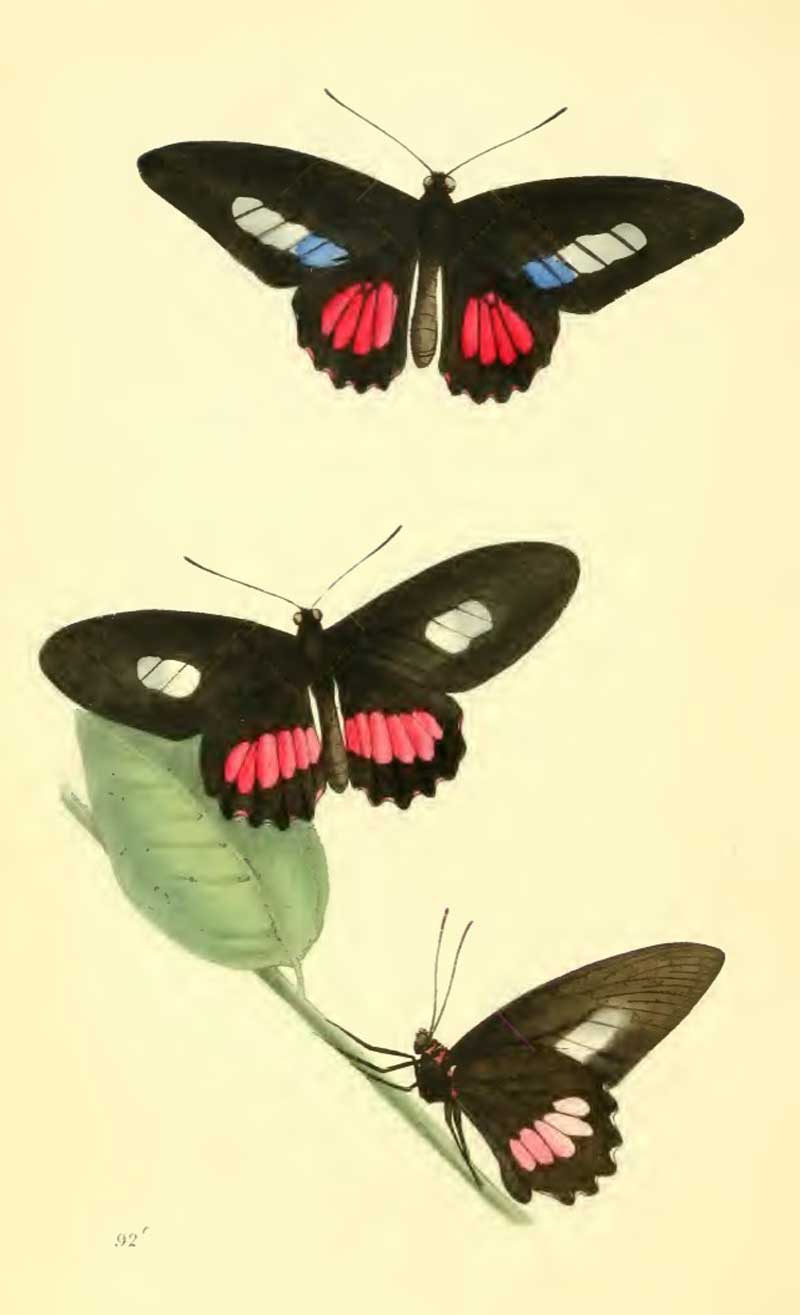
Superregnum: Eukaryota
Cladus: Unikonta
Cladus: Opisthokonta
Cladus: Holozoa
Regnum: Animalia
Subregnum: Eumetazoa
Cladus: Bilateria
Cladus: Nephrozoa
Cladus: Protostomia
Cladus: Ecdysozoa
Cladus: Panarthropoda
Phylum: Arthropoda
Subphylum: Hexapoda
Classis: Insecta
Cladus: Dicondylia
Subclassis: Pterygota
Cladus: Metapterygota
Infraclassis: Neoptera
Cladus: Eumetabola
Cladus: Endopterygota
Superordo: Panorpida
Cladus: Amphiesmenoptera
Ordo: Lepidoptera
Subordo: Glossata
Cladus: Coelolepida
Cladus: Myoglossata
Cladus: Neolepidoptera
Infraordo: Heteroneura
Cladus: Eulepidoptera
Cladus: Ditrysia
Cladus: Apoditrysia
Cladus: Obtectomera
Superfamilia: Papilionoidea
Familia: Papilionidae
Subfamilia: Papilioninae
Tribus: Troidini
Subtribus: Troidina
Genus: Parides
Species: Parides zacynthus
Name
Parides zacynthus (Fabricius, 1793)
Parides zacynthus is a species of butterfly in the family Papilionidae. It is found in the Neotropical realm where it is endemic to Eastern Brazil.[2]
The larvae feed on Aristolochia species (including Aristolochia macroura, Aristolochia odora and Aristolochia ruminifolia).
Subspecies
Parides zacynthus zacynthus (Brazil: Rio de Janeiro, Espirito Santo, Santa Catarina, São Paulo, Paraná)[3]
Parides zacynthus polymetus (Godart, 1819) (Brazil: Pernambuco to Bahia)
Description from Seitz
For a key to the terms used, see Glossary of entomology terms.
P. zacynthus. Band on the forewing in the male greenish blue. The spots on the under surface of the hindwing of the female paler than in P. neophilus. Brazil, from Rio de Janeiro northwards, in two geographical forms. Not rare in damp localities overgrown with bushes. The larva is grey-brown , with a yellow lateral stripe. — The form from the province of Rio de Janeiro, zacynthus F. (5b), occurs in the neighbourhood of the town of Rio, but is much rarer than P. nephalion. The forewing is not transparent at the apex; the female has a spot in the cell of the forewing. — The northern form, from Pernambuco, Bahia and Rio Tapajos, is polymetus Godt. (5 b). The forewing is transparent at the apex and the female has no spot in the cell, or only a very small one.[4]
Parides zacynthus is a member of the aeneas species group.[6]
The members are
Parides aeneas
Parides aglaope
Parides burchellanus
Parides echemon
Parides eurimedes
Parides lysander
Parides neophilus
Parides orellana
Parides panthonus
Parides tros
Parides zacynthus
References
Fabricius, J.C. 1793. Entomologia systematica emendata et aucta: Secundun classes, ordines, genera, species, adjectis synonimis, locis, observationibus, descriptionibus. Christ. Gottl. Proft, Hafniae
Collins, N. Mark; Morris, Michael G. (1985). Threatened Swallowtail Butterflies of the World: The IUCN Red Data Book. Gland & Cambridge: IUCN. ISBN 978-2-88032-603-6 – via Biodiversity Heritage Library.
Lewis, H. L., 1974 Butterflies of the World ISBN 0-245-52097-X Page 26, figure 28
Seitz, A. ed. Band 1: Abt. 1, Die Großschmetterlinge des palaearktischen Faunengebietes, Die palaearktischen Tagfalter, 1909, 379 Seiten, mit 89 kolorierten Tafeln (3470 Figuren) Public Domain This article incorporates text from this source, which is in the public domain.
Rothschild, W. and Jordan, K. (1906). A revision of the American Papilios. Novitates Zoologicae 13: 411-752. (Facsimile edition ed. P.H. Arnaud, 1967) and online
Edwin Möhn, 2007 Butterflies of the World, Part 26: Papilionidae XIII. Parides Verlag Goecke & Evers Verlag Goecke & Evers ISBN 9783937783277
Retrieved from "http://en.wikipedia.org/"
All text is available under the terms of the GNU Free Documentation License

